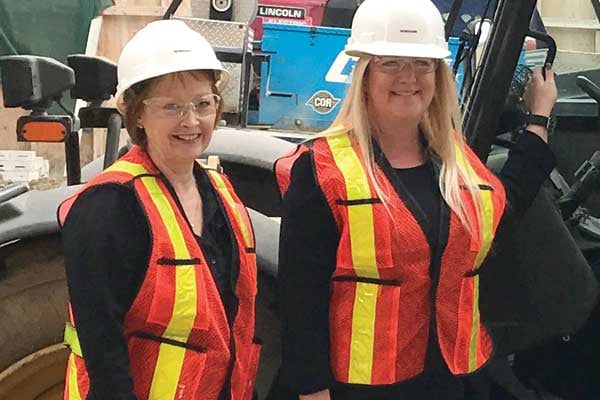Company wins gold in services category of Canada's Safest Employers awards

When your company owns and manages a few hundred properties across Canada and the United States, making sure all of your employees understand and adhere to your health and safety program can be challenging.
“We do believe, as an asset company, that our biggest strength is our people,” says John May, director, risk management and insurance at Mississauga, Ont.-based Morguard, which has 1,200 workers in Canada.
One of the foundations of the company’s safety management program is an internal communication website that houses all company policies and procedures, including OHS programs. This shared portal is designed for communication and recordkeeping. Site property managers load key documents — building inspections, safety meetings, hazard assessments — on to the shared portal. The information of each property is then available for all property managers to view. One property manager can view the information of another site — perhaps one excelling at safety — and decide to implement similar initiatives at their own site.
“In that way, we share or transfer a lot of the good or best practices, and that helps us to engage and get a robust program going,” says Darryl Berger, national manager, health, safety and security.
Morguard has also developed a new communications plan. Based on the ISO 45001 OHS management systems standard, the new, more formal program gets key safety information out to employees at all the company’s property sites.
The program has three prongs. First, newly developed toolbox talks deal with safe work practices for hazardous areas sometimes missed in safety discussions, such as garbage disposal and safe mopping of the floor.
The second prong — Did You Know? — is a quick-reference, one-page document outlining safe work procedures for a particular hazard. It’s always available for workers to stop and read.
The third aspect is called Learning From Incident Reports. When an incident occurs, the event, along with its lessons, is documented and shared across all sites. Supervisors and managers use that as a topic for discussion in safety meetings.
“We want to facilitate the learning from an event at one site and try to avoid a repeat of that same injury at another site,” says Berger.
Morguard has also greatly increased the number of safety audits it conducts at its various sites. At its residential properties, for example, the safety team does onsite safety reviews twice annually: first, to do a formal audit; second, to do a followup. Each audit involves monitoring and measuring 12 elements of safety performance, such as first aid, fire and life-safety and incident investigations. Good or best practices are recorded and shared with other company sites. Gaps and weaknesses are highlighted. Working with the site managers, the safety team develops and implements an action plan within 30 days.
“Year over year, we’ve seen an improvement in that our sites are implementing our compliance and safety management programs,” Berger says.
The company has also recently reviewed and improved its security program, updating security procedures and policies at properties. They have upgraded equipment, such as cameras and DVRs, and enhanced security signage, door hardware and access, building inspections and patrols, as well as property security assessments.
At Morguard, continuous improvement is always a priority.
“We take a full approach to how we deal with risk, and health and safety is a big part of that,” May says.
“That really drives how we look at health and safety and how we try to do everything we can to make sure that we manage the well-being of our employees, tenants, guests and visitors the best we can.”





